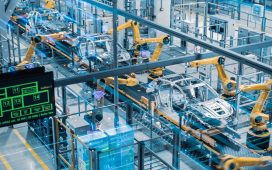
Continuous integration and continuous delivery (CI/CD) is rapidly emerging as the primary engineering practice for enterprises ramping up application modernization, according to new research from Red Hat.
68% of respondents to a Red Hat survey highlighted “improving CI/CD” as their primary focus in application modernization while 66% of respondents pinpointed “data modernization” as a key enterprise goal over the last year.
More than half (53%) of respondents also revealed they have accelerated efforts to automate workloads while 51% have begun investing in “serverless computing”.
The popularity of CI/CD came as a surprise to Red Hat, according to program manager Tobias Hartwig.
Speaking to ITPro at KubeCon 2024 in Paris, Hartwig said the study highlighted evolving enterprise interpretations of application modernization, as well as the exploration of new ways to accelerate infrastructure transformation efforts.
A 2021 study from the firm showed that the majority of enterprises had prioritized containerization as a key method to overhaul legacy applications and infrastructure. Two years later, the landscape appears to have changed significantly.
“We asked it two years ago and back then, to a lot of customers, it meant containerization,” Hartwig told ITPro.
Seeing this recent shift was interesting, he said, and could be in some ways attributed to declining “hype” around containerization.
“People realize what the reality is and what the priorities are,” he added.
CI/CD has surged in popularity since 2021
The decline in containerization has been brought into sharp clarity by the rise in focus on CI/CD, which was far closer to the “bottom of the list” last time according to Hartwig.
Red Hat’s 2021 Application Modernization report showed containerization and CI/CD occupied almost opposite positions, a degree of change that is “rare” to see from survey to survey, according to the wording of the report itself.
Hartwig described this change as surprising, explaining that, “as vendors, we often feel like … everyone does CI/CD,” but that the figures of the report clearly show an overestimation of how far along the market is in CI/CD.
The importance of CI/CD doesn’t just apply to the development of new products either, Hartwig expanded, as companies need to look to their legacy infrastructure to unlock all the advantages of CI/CD.
Data modernization as a top definition of application modernization in the report can largely be attributed to the increasing focus on AI within organizations, as well as the importance of “modernizing the data exchange” between applications.
“Now that people start to think about how to leverage AI, they realize there’s a data problem there,” Hartwig said.
“They need to get their data ready and they need to be able to harvest the data for … within the applications, but also for AI use cases,” he added.
In terms of the report’s more fundamental results, the core drivers of application modernization centered around security, reliability, and scalability.
Respondents almost “universally” cited these drivers as factors in their organization’s decision to modernize, according to the report.












